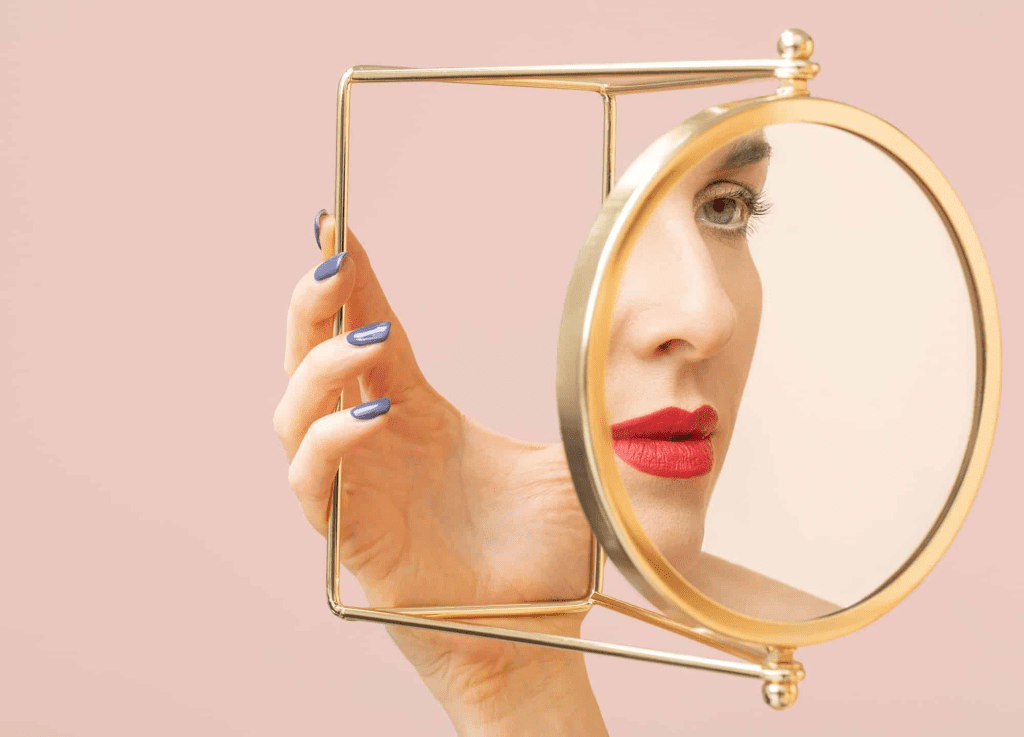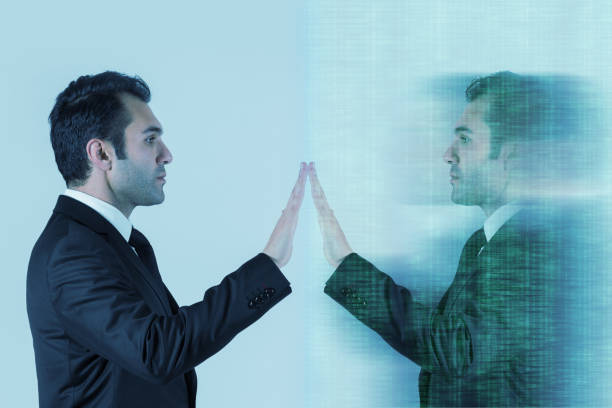Have you ever looked in the mirror, thought “I look great today,” snapped a photo with your phone… and instantly regretted it? You’re not alone. Most people feel more confident in front of a mirror than in front of a camera. But here’s the real question: which one actually shows the real you?
Let’s break it down and find out why your reflection feels familiar, your photos feel weird, and which version of you is actually accurate.
Mirrors Show You a Flipped Version of Yourself

When you look in the mirror, you’re not seeing what everyone else sees — you’re seeing a reversed image. Your left becomes right, your right becomes left. It’s like looking at yourself through a filter you’ve grown up with your entire life.
Since childhood, you’ve seen yourself in mirrors: brushing your hair, trying on outfits, or making silly faces. That flipped version becomes what your brain recognizes as “normal.” It’s comfortable. Familiar. And often, more flattering — not because it’s better, but because it’s what you know.
Cameras Capture a True, Unflipped Image
Now, let’s talk about your phone’s rear camera. That lens doesn’t flip your image like a mirror does. Instead, it shows you exactly how others see you — and that’s where the disconnect happens.
Suddenly your part looks like it’s on the wrong side. Your smile seems uneven. Your face just looks…off. But here’s the truth: the camera isn’t lying. It’s just showing you what the rest of the world sees every day. The problem isn’t your face — it’s your brain reacting to an unfamiliar version of it.
Why Does the Mirror Feel “Better”?
The reason you “look better” in the mirror isn’t because mirrors are magical. It’s because you’ve grown emotionally attached to your mirrored self. Your brain prefers what it sees repeatedly — this is called the mere-exposure effect. The more you see something, the more you like it. That includes your mirrored face.
So when a camera suddenly shows you a raw, unflipped version, it feels like a stranger is staring back at you. It’s not bad — it’s just different. And your brain isn’t used to it.
Video : Can Mirrors Reflect Infinitely?
Front Camera Distortion Doesn’t Help
Here’s another twist: if you’re using your phone’s front camera (aka the selfie camera), you’re dealing with something even less accurate.
Front cameras are wide-angle and often close to your face, which creates lens distortion. It can make your nose look bigger, your forehead look wider, or your features appear slightly warped. Plus, bad lighting and awkward angles can completely throw off your appearance.
So now you’ve got:
- A flipped image in the mirror
- A true image from the rear camera
- A distorted, pixel-packed version from the front camera
No wonder we’re confused about what we actually look like.
Photos Freeze What the Mirror Can’t
One reason people panic when they see a photo of themselves is because a picture freezes a split second in time — including your worst angles.
When you’re looking in the mirror, you’re constantly moving, adjusting your expression, finding your “best side.” You’re in control. But in a photo? Every blink, smirk, or micro-expression is locked in forever.

The camera catches you mid-laugh or mid-blink, and suddenly you’re thinking, “Do I really look like that?” Not always. You’re just seeing a split second, not the full experience of your living, breathing, moving self.
Which One Is the Real You?
Here’s the big truth: both the mirror and the camera are real — just different versions.
- The mirror shows you what you see
- The rear camera shows you what others see
- The selfie camera shows you what a small lens sees (and sometimes distorts)
None of them are “fake,” but none of them tell the full story either. You are more than a snapshot or a reflection. You’re a dynamic, expressive human being — not a static image.
How to Feel Better About Both Versions
So how can you stop obsessing over your mirror vs. photo self?
- Get familiar with your camera face — Look at your photos more often. The more you see your unflipped image, the more your brain will adapt.
- Play with angles and lighting — Learn your good angles. Everyone has them.
- Stop zooming in — Your face isn’t meant to be studied at 500% magnification.
- Remember: No one looks perfect in every picture — Not even models. Most pictures online are filtered, staged, or edited.
- Focus on expression — A genuine smile, sparkle in the eyes, or moment of joy always looks better than a forced pose.
Video : Why Your Reflection Is a Lie (You’ve Never Seen Your Real Face)
Conclusion
The next time you catch yourself panicking over a picture or overanalyzing your reflection, take a deep breath. Both versions are just different ways of seeing the same you — a you that changes depending on the light, the angle, the camera, or even your mood.
There is no one single “real” image of you — because you are a constantly moving, evolving, expressive person. And that’s something no mirror or camera can ever fully capture.
So go ahead. Smile at the mirror. Snap the selfie. And know that you’re beautiful either way.


